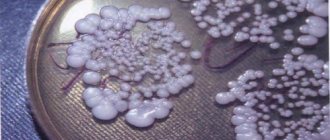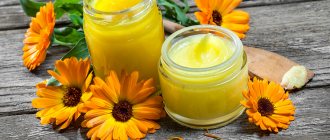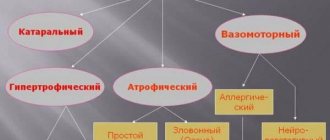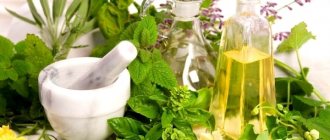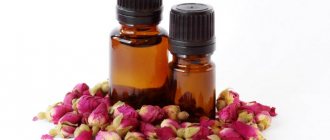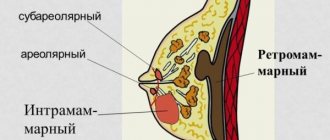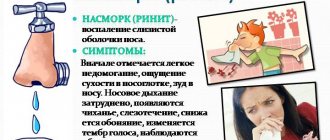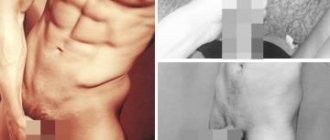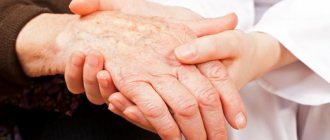Symptoms of subungual panaritium
This type does not develop on the tendons or bones of the finger, but is localized under the main part of the nail - in the dermis layer.
An ordinary wooden thorn, thorn or other sharp object, if the finger moves unsuccessfully, can penetrate deep inside under the nail.
If the item is not removed and the affected area is not properly treated, inflammation will begin under the nail, accompanied by the following symptoms:
- immobility of the injured finger;
- hyperemia;
- swelling;
- pain with twitching;
- state of chills;
- low-grade body temperature;
- the presence of purulent exudate;
- general weakness throughout the body.
The inflammatory process must be stopped at an early stage. Otherwise, an abscess will begin, developing rapidly and spreading to the tendons and bone.
Negligent attitude towards the disease, inaction - can lead to complications: blood poisoning with pyogenic microbes, blockage of veins, bone inflammation. All these consequences are fraught with surgical intervention.
The rate of growth of purulent exudate is influenced by the state of the immune system. Patients with stage 2 diabetes mellitus are at risk.
Panaritium of a finger on the hand: reasons
Panaritium is a disease of the fingers, which is accompanied by a purulent inflammatory process under the skin.
Most often, it occurs as a result of a puncture in the skin of the hand or finger with a banal sewing needle or a minor scratch received while playing with a pet. In other words, any mechanical damage to the skin and underlying tissues entails the likelihood of panaritium, since even a minor microtrauma on the skin of the hands, which has a special structure (the fat layer tightly adjacent to the upper tissues), can become infected.
Most often, the causative agent of purulent panaritium is Staphylococcus aureus, but in some cases other bacteria can provoke the disease:
- Streptococcus
- Enterococcus
- Fungus
- Escherichia coli
The risk group of people who are most susceptible to felon includes:
- People with diabetes
- Carriers of HIV infection
- Those suffering from vitamin deficiency
- Having problems with blood
If you promptly treat microtrauma on the skin of your hands, then the chance of protecting yourself from panaritium is very high.
Principles of treating a disease on the big toe or hand at home
If the first signs of purulent exudate appear on a swollen finger, you need to consult a surgeon.
The initial stage of felon under the nail is treated with the following methods:
- Medication.
- People's
- Physiotherapeutic.
Provided that conservative treatment did not affect the inflammatory process or stop it, then they resort to surgical treatment in a hospital.
What not to do
This infection is unpredictable.
Any error in treatment can lead to a worsening of the condition. Therefore you cannot:
- self-medicate;
- allow unsanitary conditions;
- open the suppuration yourself;
- take thermal procedures in the presence of pus.
In case of severe pain, when pus appears, you can apply cold. This will ease the pain a little. Next, it is imperative to seek help from a surgeon.
Classification
There are two groups of the disease - serous and purulent. Depending on the site of infection and the type of tissue affected, the following forms of this pathology are distinguished:
- Skin form. It begins to develop on the finger, on the back of the hand. Under the skin, in the formed bubble, purulent exudate accumulates. Sometimes the contents contain bloody impurities. The skin in the area of the bladder becomes very red, almost does not hurt, and a slight burning sensation may be felt. If the bubble begins to enlarge, then the disease is getting worse;
- Periungual form (paronychia). The cushion around the nail becomes inflamed. In the vast majority of cases, the resulting paronychia is the result of a carelessly done manicure. Suppuration begins at the root of the nail plate, in the area of the nail fold. There is often only one reason - small cuts and microtraumas of the roller;
- Bone form. With this form, the bone tissue on the fingers suffers if it gets infected (for example, with open fractures);
- Subungual panaritium. In this form of the disease, inflammation begins in the soft tissues under the nail plate. Often, subungual panaritium is the result of a careless injection, or an accidental splinter in the finger, under the nail.
- Articular-bone form. In addition to the joint, the bone is also affected, but the tendons are preserved;
- Articular form. The interphalangeal joint is affected (purulent arthritis). The main feature of this type of disease is spindle-shaped fingers, which are difficult and painful to move;
- Tendon form. This is a complicated type of disease that leads to immobility of the hand. In this case, it becomes impossible to move the finger due to its swelling and severe pain.
A photo can be the best way to correctly identify the shape of the panaritium of a finger on a hand. Children and adults 25–55 years old are more susceptible to this pathology. The favorite place for localization of purulent formations is the fingers of the right hand from the first to the third.
Medicines for the treatment of panaritium
Medications are necessary at all stages of development of subungual felon, as it is provoked by pyogenic microbes. It is simply impossible to suppress them without chemicals and antiseptics.
Baths
These procedures are carried out provided that the inflammatory process is just beginning and the pain is still mild.
An effective alternation method:
- With potassium permanganate (potassium permanganate), which acts as a strong antiseptic. The solution is made weak. The water temperature is warm. The finger is kept in the solution for up to half an hour.
- With calendula, use a ready-made tincture in alcohol. It has anti-inflammatory properties. Dilute in warm water (100ml:10 ml). The procedure time is similar.
- With eucalyptus (alcohol tincture). Suppresses the growth of Staphylococcus aureus. Dilute in warm water (100ml:10ml). The procedure takes up to half an hour.
After the last bath, a gauze cloth is moistened with eucalyptus tincture and applied to the site of inflammation.
Treatment with antibiotics
When infected with purulent microbes, antibiotics from the penicillin group are prescribed.
This usually occurs in acute form of panaritium, when the patient is in the hospital and receives surgical treatment.
For fungal infections, antifungal medications are recommended.
If the disease is mild, then antibiotics for oral, intravenous, and intramuscular use are not prescribed. They can only be recommended topically, in the form of a soft dosage form.
Ointment
Tetracycline, Levomikol, Lincomycin are antibiotic ointments that act on purulent microbes. After a warm bath, which increases blood flow to the lesion, the ointment is applied in a thick layer in the form of an application. Secure tightly with a bandage.
Types and symptoms
Panaritiums are classified depending on location. The following types of pathology are distinguished:
- Cutaneous (or subcutaneous) panaritium affects only the epidermis. Pus accumulates inside the outer covering, while the inflammation does not pass further into the dermis.
- The periungual panaritium is localized around the nail plate. Another name is paronychia.
- The subungual develops directly under the plate.
- With bone panaritium, the inflammation spreads far deep, affecting the bone tissue of the finger.
- Pandactylitis is characterized by the localization of pus in the area of the subcutaneous palmar tissue.
- With articular panaritium, inflammation affects the movable joints of the phalanges and metacarpal bones.
- There is osteoarticular type of pathology, in which all these elements are involved in the process.
- When the tendons are suppurated, tendon panaritium is diagnosed.
- Herpetic panaritium stands out as a separate species.
Be sure to read:
4 Ways to Treat Dry Calluses Between Your Toes
Symptoms of the disease include pain, which gradually intensifies and acquires a pulsating, even bursting, character. The pain becomes unbearable, patients most often cannot sleep, after which they seek medical help. This suggests that surgical treatment cannot be avoided.
Photo of felon on a finger
The site of purulent inflammation becomes hyperemic, the skin feels warm to the touch. A swelling occurs, which transforms into a vesicle with purulent contents. The inflammatory process can move deeper, including to bone tissue. The function of the upper limb is impaired, the patient cannot move his arm.
In severe cases of pathology, the general condition of the patient suffers. There are complaints of increased body temperature, weakness, headaches and dizziness, loss of appetite.
Traditional recipes for treating panaritium at home
Patients noted that if drug therapy is combined with recipes from traditional practice, then recovery occurs faster.
Traditional recipes can be recommended by your doctor as an additional remedy, and not as a primary one.
Onion compresses for skin diseases
They are used in combination with baths of soda and salt.
A quarter of the onion is grated on a grater (large). Spread on a gauze bandage in a layer of 1 cm. Fix tightly on the finger.
Cover with compress paper and secure with cloth. Keep for 2 hours.
Before and after the compress, make a bath for the sore finger. For 500 ml of water, a spoonful of soda and salt. Alternate twice a day.
How to get rid of it using garlic baths
Garlic is a natural antibiotic. One head is crushed and filled with hot water (200 ml). Leave until the water reaches a certain temperature so that the sore finger feels comfortable. Take a bath for 20 minutes. Repeat for 10 days.
Protein with alcohol
Protein combined with alcohol is an effective combination in the treatment of felon. To do this, the white is carefully separated from the yolk and combined with alcohol (96%).
Alcohol is gradually added to the protein, mixing thoroughly. Ratio 1:40 ml. The protein, having curled up, takes the form of white flakes, which are filtered through gauze.
Apply to the site of inflammation. Change after 7 hours. Course 3 days.
Golden mustache tincture
You can buy it ready-made in pharmacies or prepare it yourself.
To do this, 1 leaf and 25 knees (tendrils) of 20 cm each are crushed, poured with alcohol or vodka (40%), preheated. They insist for a day. The liquid is not filtered. Poured into a small container.
Keep your finger on for about half an hour. Repeat the procedure 2-3 times a day. Blot with a napkin and lubricate with iodine tincture (5%).
Propolis tincture
The product in its pure form (25 g) is poured with alcohol (100 mg). Keep for 3 days. A compress is made from the resulting mixture. Alternate with salt and soda baths.
According to patient reviews: treatment with propolis tincture gives results after 3 days - the abscess opens. After 5 days, healing begins.
Fir oil
Prepare a soft ointment: 1 part fir oil and two parts pork internal fat. Apply in the form of applications. The dressings are changed 2-3 times a day. Treatment period is 2-3 weeks.
Vishnevsky ointment
It is considered a powerful antiseptic that has no side effects.
Apply as a compress: a thick layer of ointment, gauze, parchment paper, cloth. Keep it there all night.
In the morning, take a soda-salt bath. At night, apply a compress again. Alternate until positive results.
Tincture of calendula
A bandage napkin is moistened in calendula tincture, applied to the hearth, and fixed with cling film for 3 hours. This is repeated several times.
How long to treat
Any remedy for treating felon at home acts at a certain speed. For some, a few days are enough to suppress inflammation; for others, weeks are enough. The main thing in this matter is regularity.
If symptoms worsen within two days, treatment with the chosen remedy must be stopped and contact the surgical department.
There is protection from panaritium, even at home. The main thing is to be vigilant and not let everything take its course.
How to treat panaritium
Treatment of panaritium on the finger is complex and most often takes place in a hospital setting. Surgical removal of pus with wound irrigation is usually required, since in rare cases patients see a doctor in the initial stages of the disease.
Treatment of panaritium in children is no different from that in adults. A visit to a specialist should not be delayed to avoid the spread of the pathological process.
Medicines
Treatment with antibiotics is reduced to their use in the form of topical agents. Tablet forms and solutions are used for general intoxication syndrome and complications (lymphadenitis, phlegmon, sepsis).
Treatment with only drugs is used for the subcutaneous type. Vishnevsky ointment for panaritium has an anti-inflammatory effect and promotes the rapid removal of pus. Apply at least twice a day to gauze, which is fixed at the site of inflammation. Vishnevsky ointment is an affordable drug, its cost is 35-50 Russian rubles.


